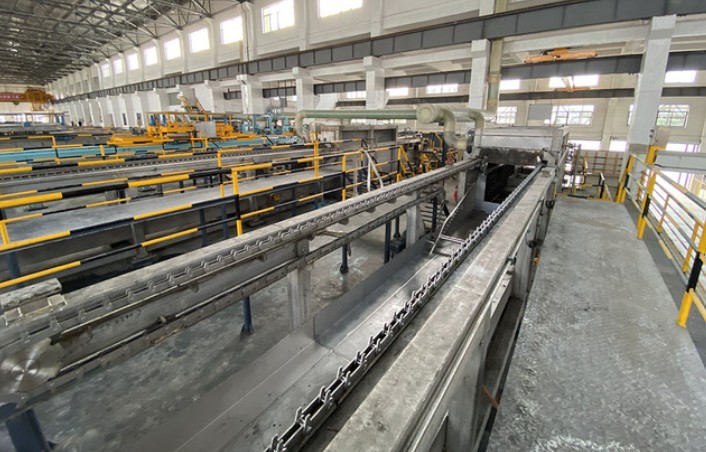NEWS&EVENTS
Home > News&Events > Company news > Causes and solutions for anode passivation during antimony electrolysis
Anode passivation is a common problem that affects production efficiency during antimony electrolysis. The main reasons for its occurrence are as follows.
Firstly, excessively high current density is a key factor leading to anode passivation. When the current density exceeds a reasonable range, a dense oxide film will rapidly form on the anode surface. This film acts as a "barrier," severely hindering the normal dissolution of antimony ions and making it difficult for the electrolysis reaction to proceed continuously and efficiently.

Secondly, insufficient free acid in the electrolyte should not be ignored. When the acidity is insufficient, the antimony ions dissolved from the anode are easily hydrolyzed, generating basic salts or oxides. These substances will gradually cover the anode surface, forming a passivation layer and affecting the electrolysis process.
Third, impurities also have a significant impact. Impurities such as arsenic and bismuth contained in the anode plate can alter the physical properties of the anode mud, making it denser and adhering to the anode, thereby triggering passivation.
To address these issues, a series of preventative and remedial measures can be taken. First, optimize the current density, controlling it below the critical passivation current density to ensure stable electrolysis. Second, maintain appropriate acidity, regularly analyze the electrolyte composition, and replenish acid promptly to ensure sufficient free acid. Third, strengthen anode plate quality control to improve the purity of crude antimony anodes and reduce impurity content. Additionally, periodically remove the anode plates for physical cleaning, brushing away the anode sludge and passivation film. Finally, add a small amount of surfactants and other additives to the electrolyte to alter the anode sludge structure, making it loose and easily detachable, thereby effectively solving the anode passivation problem and improving the production efficiency and quality of antimony electrolysis.